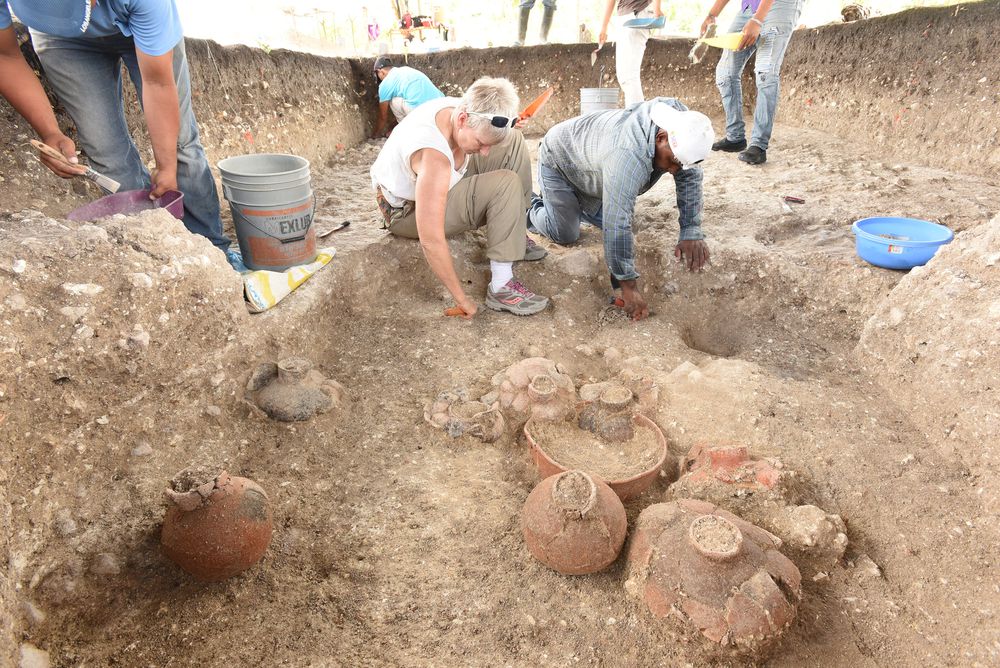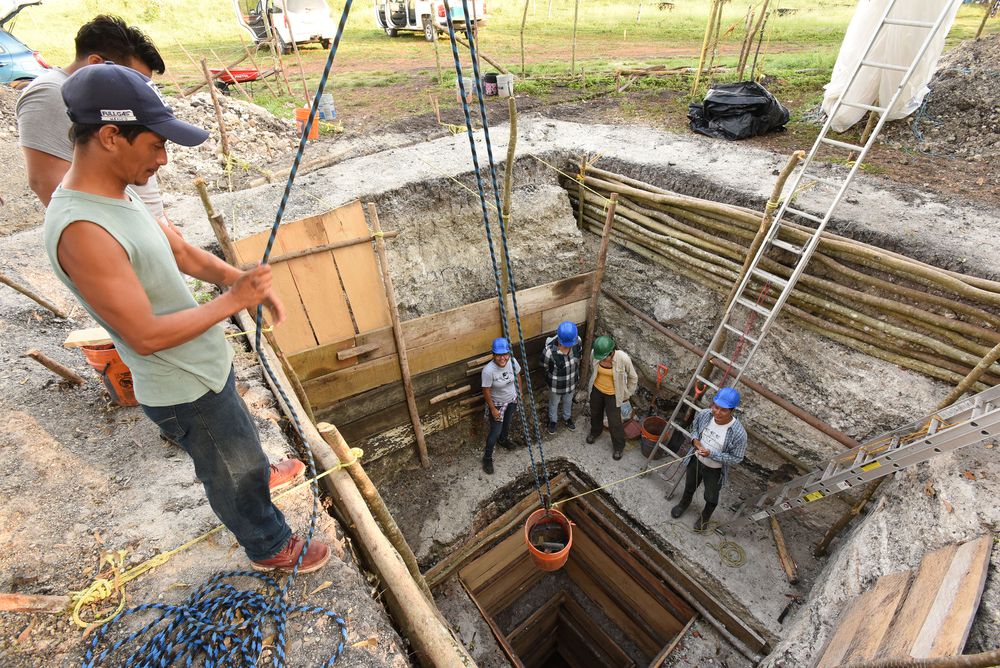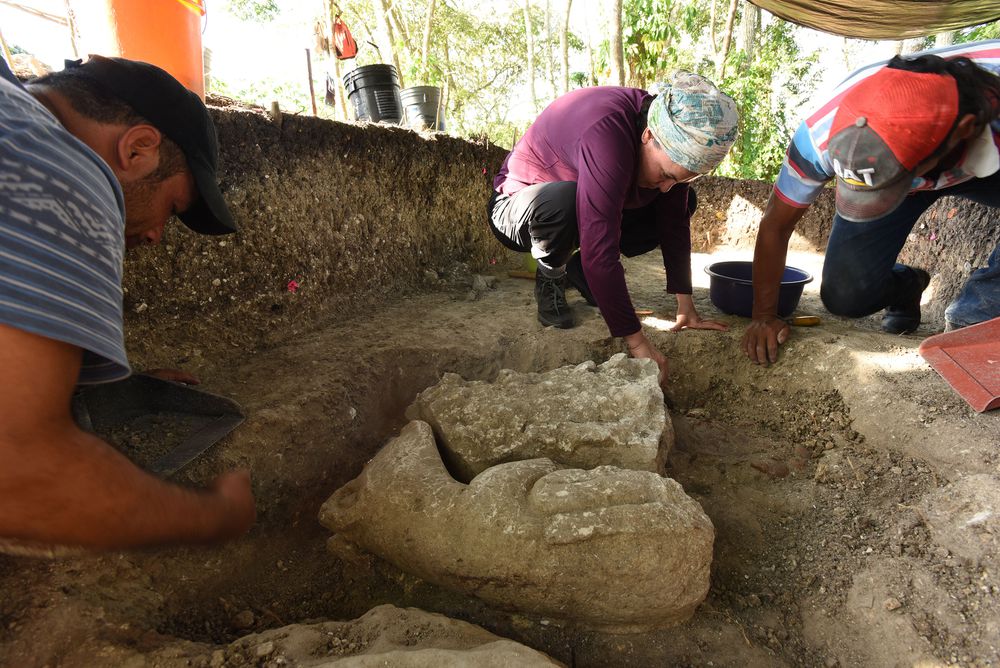Researchers relate the construction to the transition from an itinerant lifestyle to a more sedentary one.
TABASCO Mexico (El País) – A walk through Aguada Fenix in Tabasco Mexico is like walking on sandy roads surrounded by a dense natural landscape. “No one suspected what lay beneath,” says Takeshi Inomata, a researcher at the School of Anthropology at the University of Arizona in the United States and author of a study published Wednesday in Nature.
According to the study’s descriptions, the dirt roads and numerous trees hide an artificial Mayan platform that extends over an astonishing area of some 563,000 square meters. It is the largest and most ancient structure discovered so far in the Mayan civilization, marking the transition from an itinerant to a more sedentary lifestyle since 950 BC.
Thanks to the Lídar technology, a laser detection method that creates a three-dimensional map, a set of ceremonial centers were drawn, built between 1000 and 800 B.C., about 10 to 15 meters high and from which nine roadways emerge. “It was impressive to see all that surface area. It’s huge,” the researcher confirms.

Melina Garcia, one of the researchers, in Aguada Fenix looking for evidence. TAKESHI INOMATA
The discovery challenges the models conceived so far. To begin with, the scientific community thought that the Mayan civilization was built little by little, that is, village by village, until it reached more massive structures. But this excavation shows the opposite: they started from the largest to create the small. “I think that having such a strong base helped them to organize themselves and spread out into smaller villages,” says Inomata.
Sedentarism and social resemblance
According to the author, the next step is to analyze the surroundings and see how this complex was communicated with the rest. But the most important thing for him, for now, is that this finding becomes the most conclusive proof of the transition from a nomadic lifestyle to a much more sedentary one. In times before 1200 B.C., the inhabitants of this area did not use pottery. According to the authors, the Mayans were very itinerant. They were dedicated to hunting, farming, such as corn, and fishing.

Daniela Triadan working on ceramic tableware dated 900-700 B.C. in Aguada Fenix (Mexico). TAKESHI INOMATA
For a long time, some researchers thought that the Maya were not sedentary until approximately 350 B.C. Today, the idea changes. Sedentarism appeared much earlier because of the importance of corn crops to these civilizations and the presence of ceramic dishes. “This is key to understanding the past and how civilizations were built,” says Inomata. “They probably didn’t want to move around to get control of the corn and have it stolen from them,” he imagines. Inomata wants to discover more about this underground world, not so much about the imposing structures, but rather about the inhabitants who built them: who were they and how did they live?
Another surprising aspect of the research is that the finding does not leave clear evidence of a very marked social inequality, as was deduced from previous discoveries. “There was also a social gap, but not as deep. There were no kings or hierarchies as such. Moreover, with this discovery, we see that it was a community work and that they were dedicated to the same thing. Everything revolved around farming and fishing. There was a certain similarity between them,” speculates Inomata.

A deep excavation in the superficial platform of Aguada Fenix that shows the complete structure. TAKESHI INOMATA
Searching for residential areas
For Anabel Ford, director of the Mesoamerican Research Center at the University of California, Santa Barbara (USA), the excavation data, and many contexts dates present in the study are impressive. “I was aware of this research and am amazed at the combined use of different leadership scales and the identification they made,” she says. However, the fact that it is the largest and oldest discovery does not appeal much to her. “I’m not surprised by the things we don’t know about prehistory. Liddar technology is an incredible way of revealing artifacts and evidence of human endeavors. Phoenix Water is just one example,” he argues.
This site seems to have played a central role in the Mayan civilization’s social and cultural innovation process. Ford acknowledges that the enclave of Aguada Fenix is significant in shifting from archaic shifting horticulturists to more sedentary farmers.
On the other hand, the expert believes that there has always been interaction throughout Mesoamerica -a region that includes the southern half of Mexico, Guatemala, El Salvador, Belize and western Honduras, Nicaragua, and Costa Rica: “Although Aguada Fénix is the first area where the doubt has been cleared up a bit more since there are many other clues. Takalik Abaj, on the southern Guatemalan coast, offers brands of similar artifacts and of the same date that links the Olmecs with the Mayans”.

Veronica Vazquez taking the Mayan sculptures of the Preclassic period in the periphery of Aguada Fenix (Mexico). TAKESHI INOMATA
Ford disagrees with the authors when it comes to talking about social inequality. “It’s true that the construction in an alluvial zone and the presence of megaliths [that were not from the nearby area] suggest a collective activity, but also hierarchical management. The site covers a substantial area and, although they have carried out significant excavations, there is no complete picture of the area,” he justifies. According to him, the differences in wealth distribution will be clearer when residential areas are found.
The director of the research center also wants to know more about the people who lived there: “There is a lot of emphasis on the monuments, the lengths, the height, the volume, but to create these collective buildings, people were needed. My curiosity is to trace the residential areas and thus understand the importance of the strategies that the Mayans used to survive in history”.


